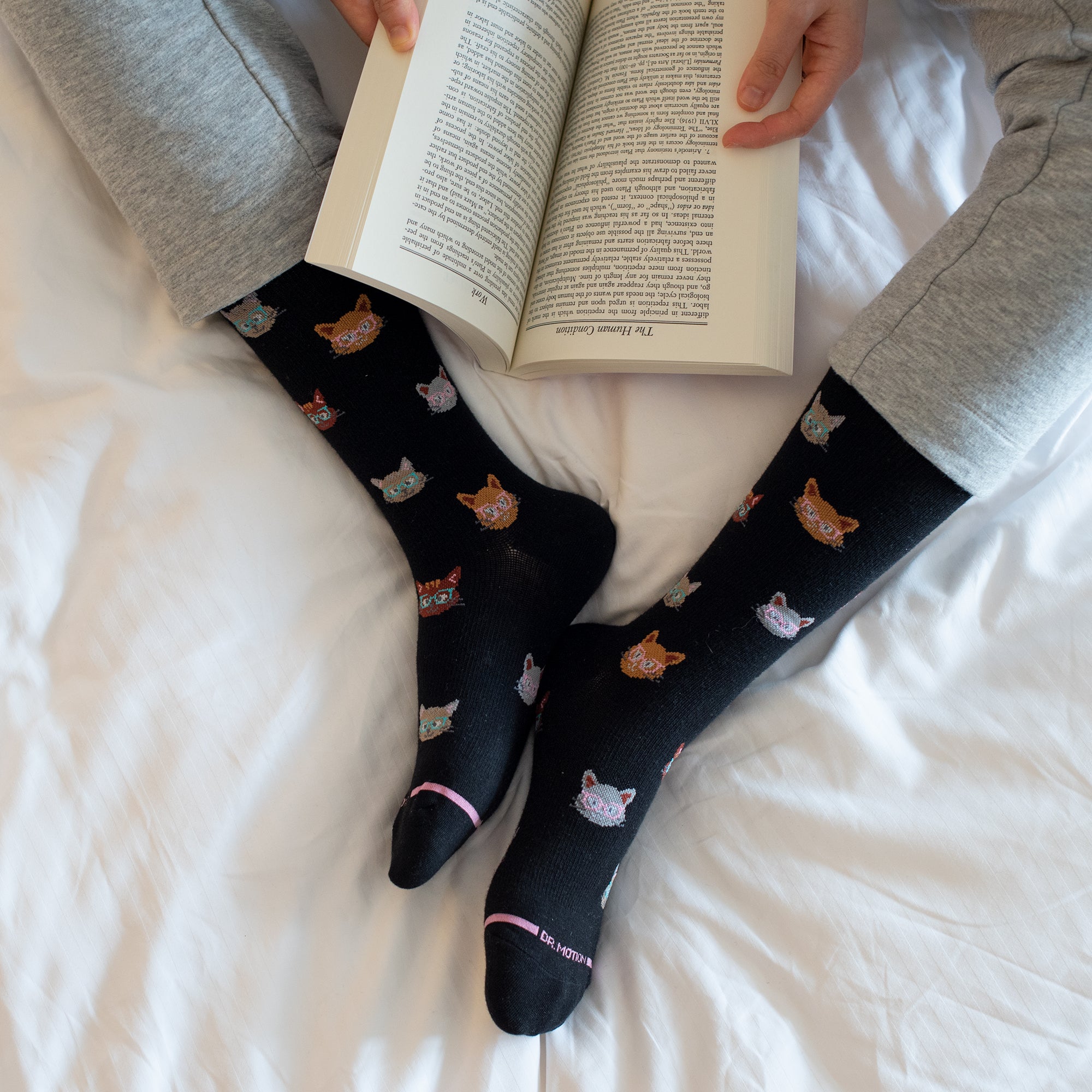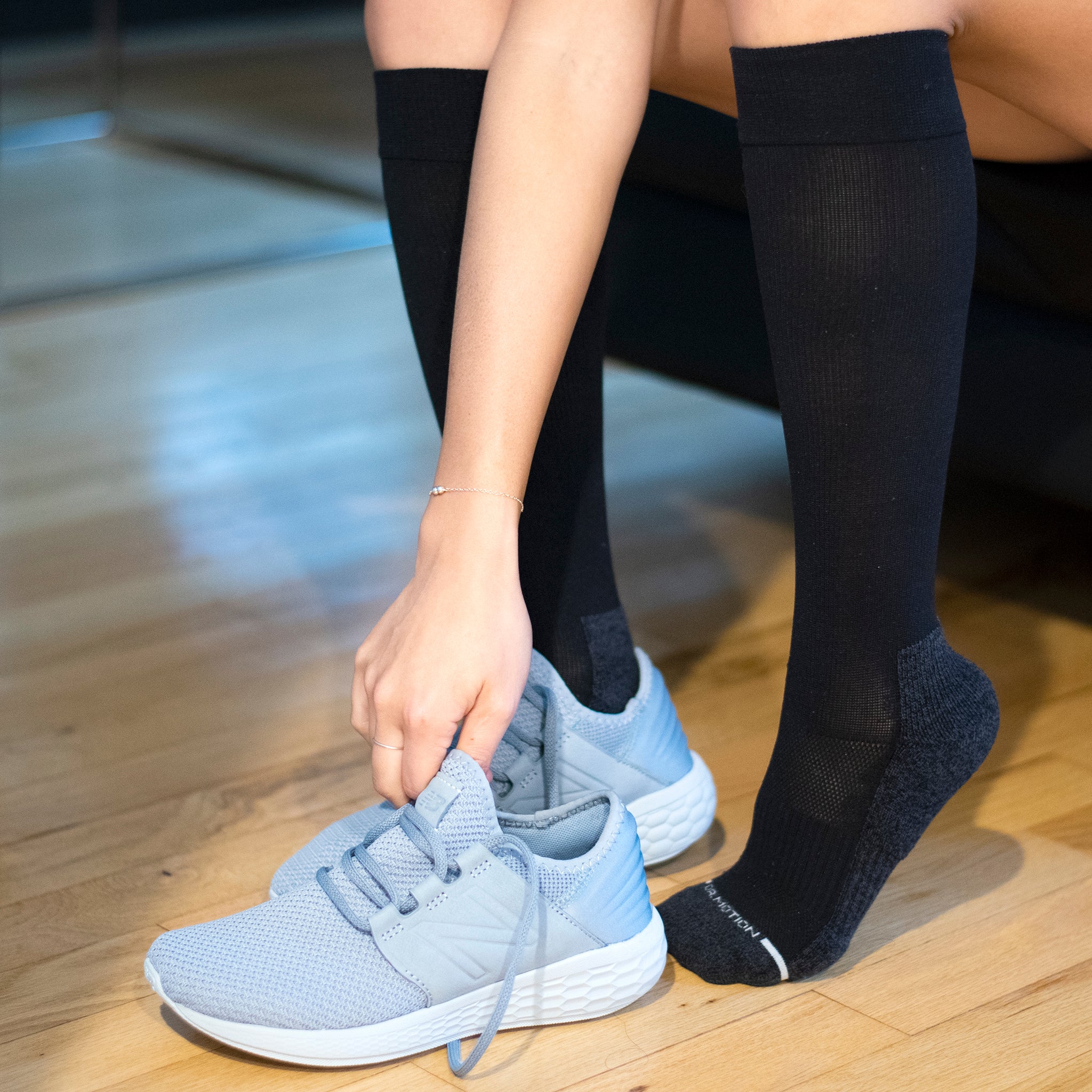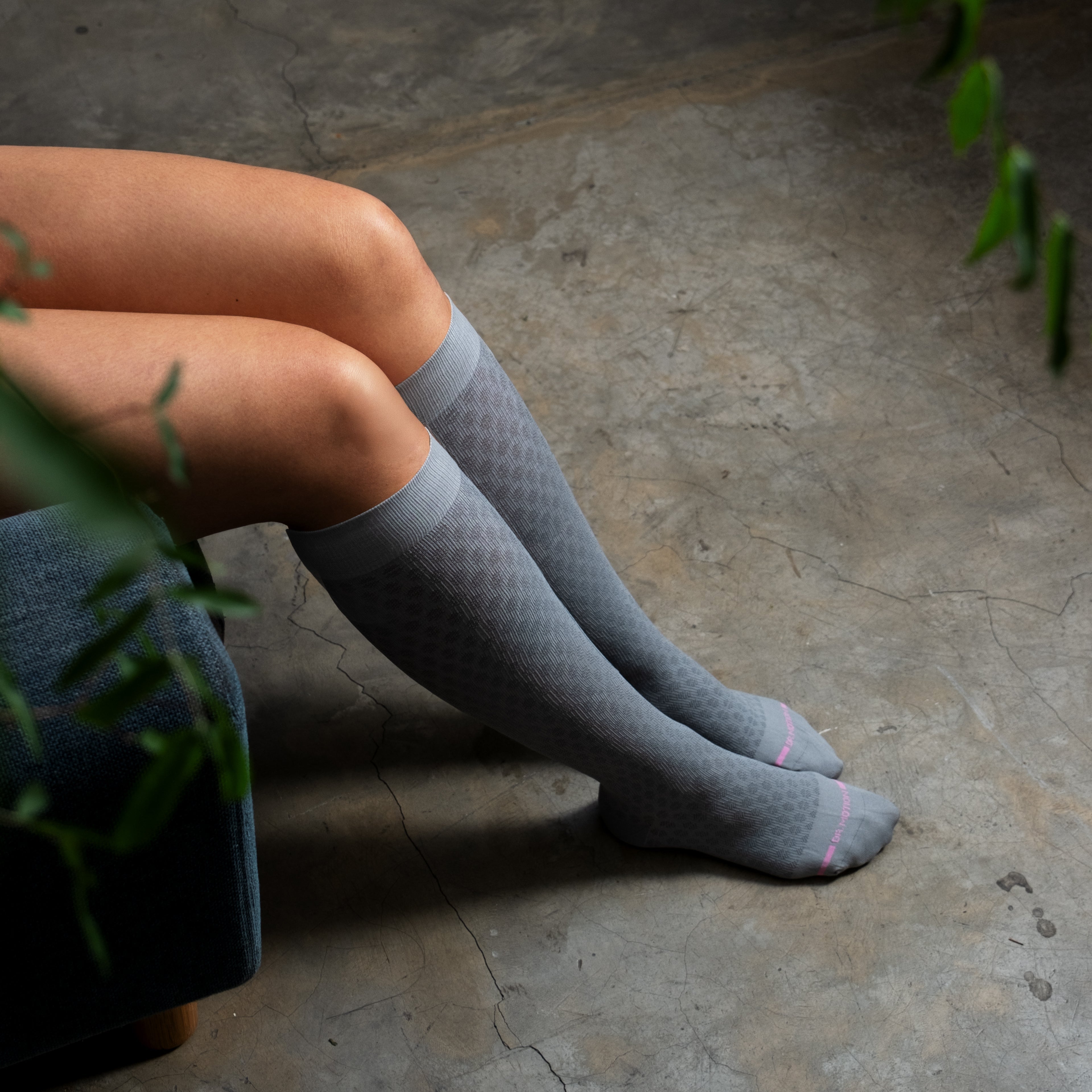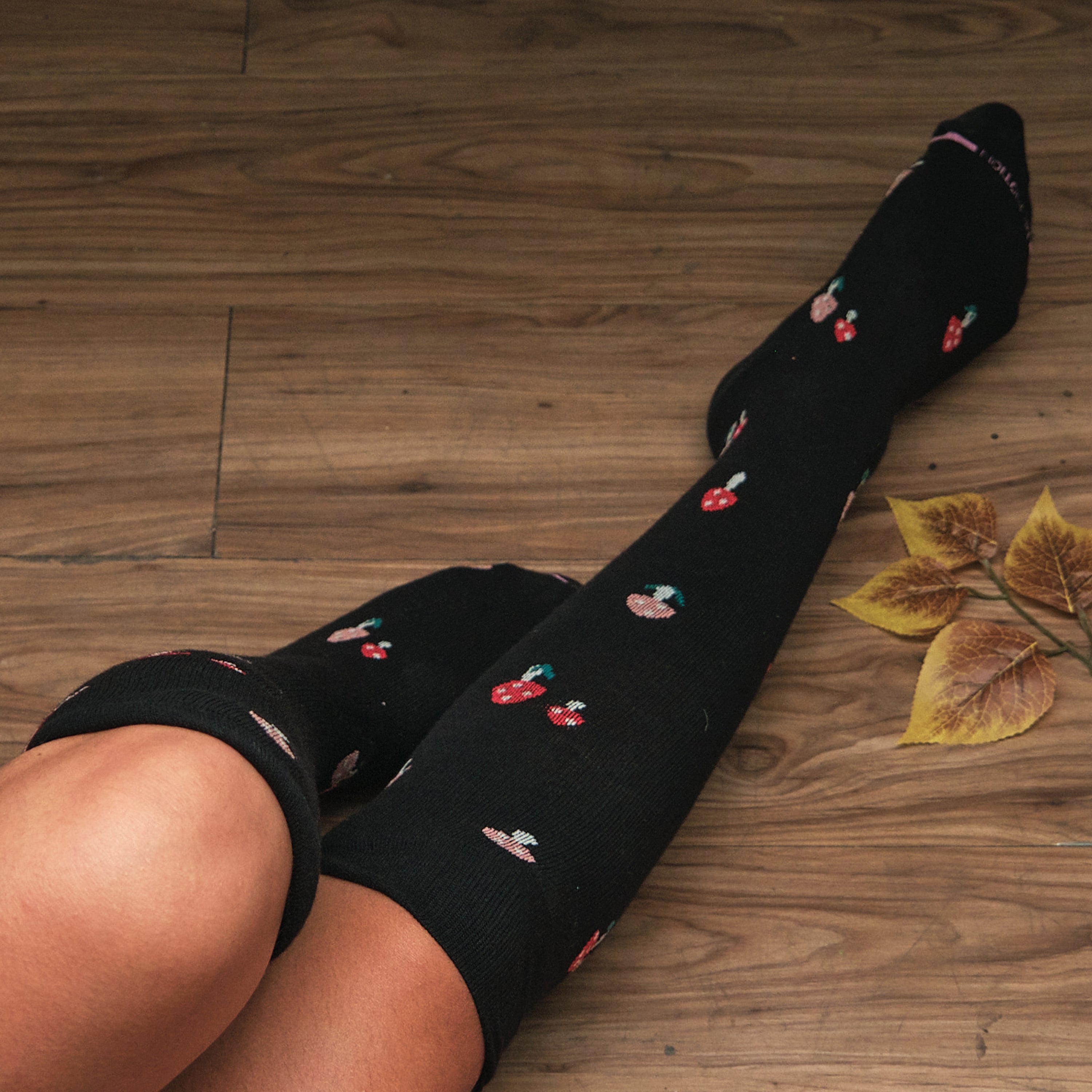Compression Socks for Postpartum Edema: Comfort, Circulation, and Care
Bringing new life into the world is a profound experience, yet the postpartum journey often comes with physical changes that many women are not fully prepared for. Among these changes, swelling in the feet, ankles, and legs, known as postpartum edema, is especially common. It can be uncomfortable, make mobility more difficult, and sometimes even be distressing. Thankfully, solutions exist that blend comfort with therapeutic benefits. One of the simplest yet most effective aids is compression socks. These supportive garments help manage postpartum edema while also offering new mothers the relief they deserve during recovery. In this guide, you will discover why postpartum edema happens, how compression socks can ease the discomfort, and the best ways to use them safely as part of a gentle, restorative recovery.
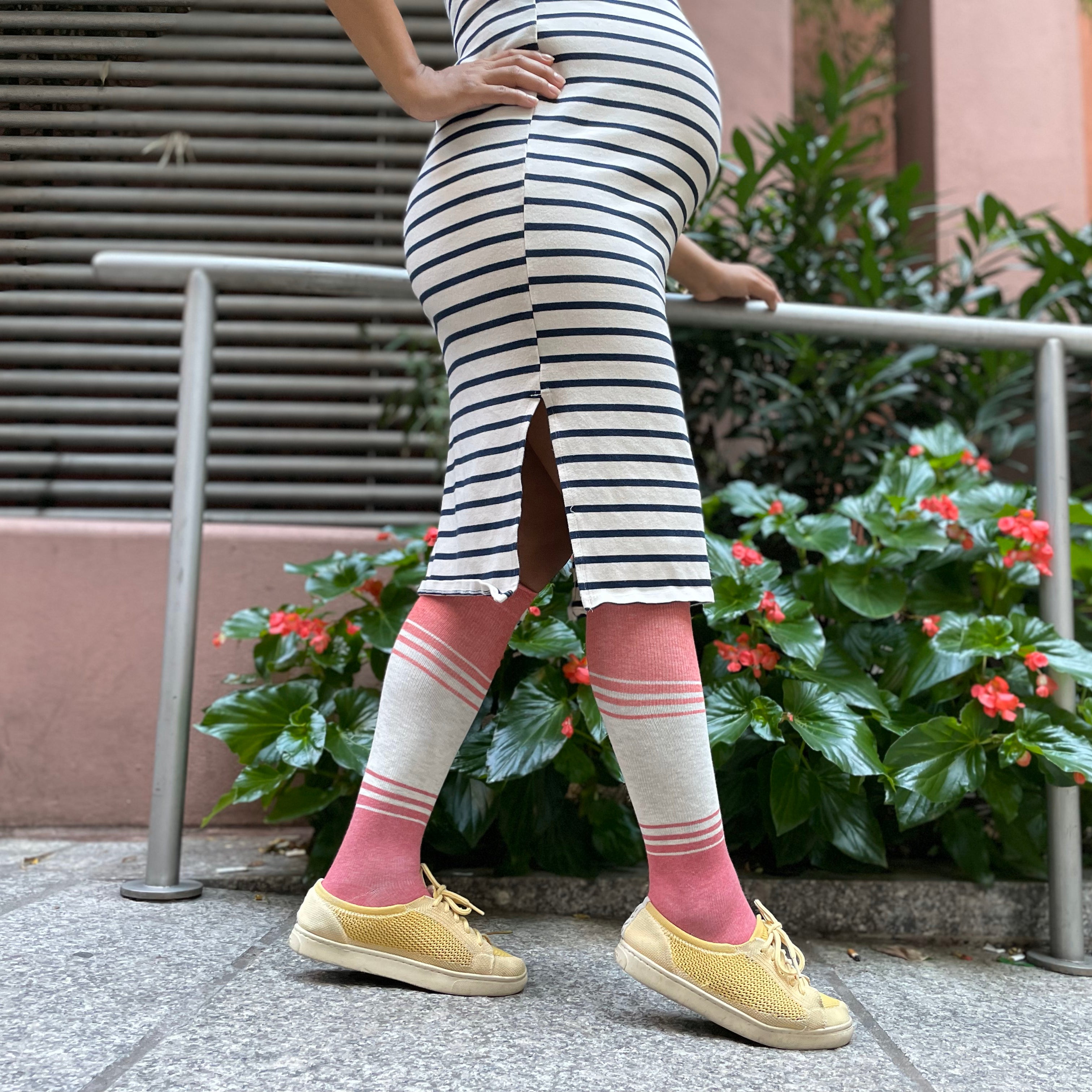
Why Does Postpartum Edema Happen?
Postpartum edema occurs because the body retains excess fluid during pregnancy, and this fluid does not always dissipate immediately after childbirth. During pregnancy, blood volume can increase by nearly 50 percent to support both mother and baby. This, along with hormonal shifts and pressure from the growing uterus, leads to fluid accumulation in tissues. After delivery, the body gradually works to eliminate this excess fluid, but most swelling typically improves within 1–2 weeks. If it lingers or worsens, it may be a sign to seek medical advice.
Additionally, factors like intravenous fluids given during labor, cesarean births, or prolonged time spent standing can also intensify swelling. For many women, this edema appears most prominently in the feet and ankles. Although temporary, it often feels frustrating at a time when comfort and rest are most needed.
How Can Compression Socks Help? A Comprehensive Guide
Introducing postpartum edema compression socks is a trusted way to ease swelling while promoting circulation and overall comfort. Designed to apply gentle pressure along the legs, these socks provide targeted support during recovery. Here are the ways in which they can help:
-
Encourage Better Circulation
Graduated compression socks apply the greatest pressure near the ankle, gradually decreasing as they move upward. This helps blood return to the heart and reduces fluid buildup in the lower limbs. For women recovering from cesarean births, improved circulation may also provide extra support against blood stagnation. While these socks lower the risk of clotting, those with higher risk factors may still need additional medical prevention.
-
Reduce Swelling in Feet and Ankles
By controlling how fluids accumulate, compression socks visibly decrease puffiness, ease heaviness in the legs, and allow shoes to fit more comfortably. This simple relief can make daily movement less burdensome.
-
Relieve Discomfort and Support Recovery and Comfort
Swelling often causes soreness and fatigue, making it harder to stay active and care for a newborn. Compression socks alleviate that achiness while improving mobility, allowing new mothers to move through recovery with greater ease. However, it is important to note that they do not directly accelerate healing.
Choosing the Right Compression Socks for Postpartum
Not all compression socks are created equal. Selecting the right pair makes a significant difference in both comfort and results. Here are the features new mothers should consider:
-
Graduated Compression Level
For postpartum use, 15–20 mmHg is generally the most effective starting range, though some women may begin with mild compression (8–15 mmHg) if advised by their healthcare provider. This provides enough support to relieve swelling without feeling overly restrictive.
-
Soft and Breathable Fabrics
Natural cotton blends and moisture-wicking fibers help keep the feet cool and comfortable, which is especially important when wearing socks for long periods.
-
Non-Binding Cuffs
The top of the sock should hold firmly without digging into the skin. Look for a seamless, non-binding cuff to prevent additional discomfort. Our socks feature a flat seam and a terry inner lining for a soft, gentle fit.
-
Stylish Yet Practical Designs
Postpartum recovery doesn’t mean sacrificing style. From classic neutrals to modern patterns, our compression socks look as elegant as they feel supportive.
-
Ease of Wear
New mothers often juggle many responsibilities, so socks that are easy to put on and take off are ideal. A slight stretch in the fabric can make them more user-friendly.
How to Use Compression Socks Safely?
Wearing compression socks is generally safe and highly beneficial, but proper use ensures maximum comfort and effectiveness. Here’s how to wear them correctly:
-
Consult with a Healthcare Provider
Before beginning any postpartum recovery tool, including compression socks, it’s best to check with your doctor to confirm they are suitable for individual health needs.
-
Put Them On Early in the Day
Legs tend to swell as the day progresses. Wearing compression socks first thing in the morning helps prevent edema from worsening.
-
Wear Them Consistently
Consistency is key. Whether during daytime hours or while traveling, regular use helps maintain circulation and reduce swelling more effectively.
-
Remove Them at Night
Unless specifically advised otherwise, compression socks should be removed before bedtime to allow the skin and tissues to rest.
-
Monitor for Discomfort
Socks should feel snug but never painful. If tingling, numbness, or extreme tightness occurs, it may be time to adjust the size or compression level.
Other Tips to Manage Postpartum Swelling
While compression socks are an excellent tool, combining them with other strategies can accelerate relief. Here are additional supportive measures:
-
Elevate the Legs
Resting with legs raised above heart level helps fluids return to circulation more efficiently and reduces ankle swelling.
-
Stay Hydrated
Drinking enough water encourages the body to release excess fluids instead of holding on to them.
-
Move Regularly
Light walking or gentle postpartum exercises stimulate circulation and reduce stagnation in the legs.
-
Avoid Excess Salt
Limiting salty snacks or heavily processed foods can prevent the body from retaining extra fluid.
-
Wear Comfortable Footwear
Supportive shoes that allow space for swelling prevent unnecessary pressure on the feet.
-
Consider Gentle Massage
Massage can aid circulation and lymphatic flow, but women with clotting risk factors should consult their provider before trying leg massage.
Experience Gentle Recovery with Our Compression Socks
Postpartum recovery is a journey that carries both joy and the need for patience and self-care. Swelling in the legs and feet is common, but it does not have to define the experience. Our compression socks for postpartum edema provide an elegant, effective, and safe way to restore comfort, improve circulation, and support gentle healing. By choosing the right pair and combining their use with healthy lifestyle practices, new mothers can ease swelling and move through recovery with greater comfort and confidence.
Disclaimer: This article provides information solely for educational purposes, including but not limited to text, graphics, images, and other materials contained herein. This article is not intended to substitute for professional medical advice, diagnosis, or treatment. Always seek the advice of your physician or another qualified healthcare provider with any questions you may have regarding a medical condition.







